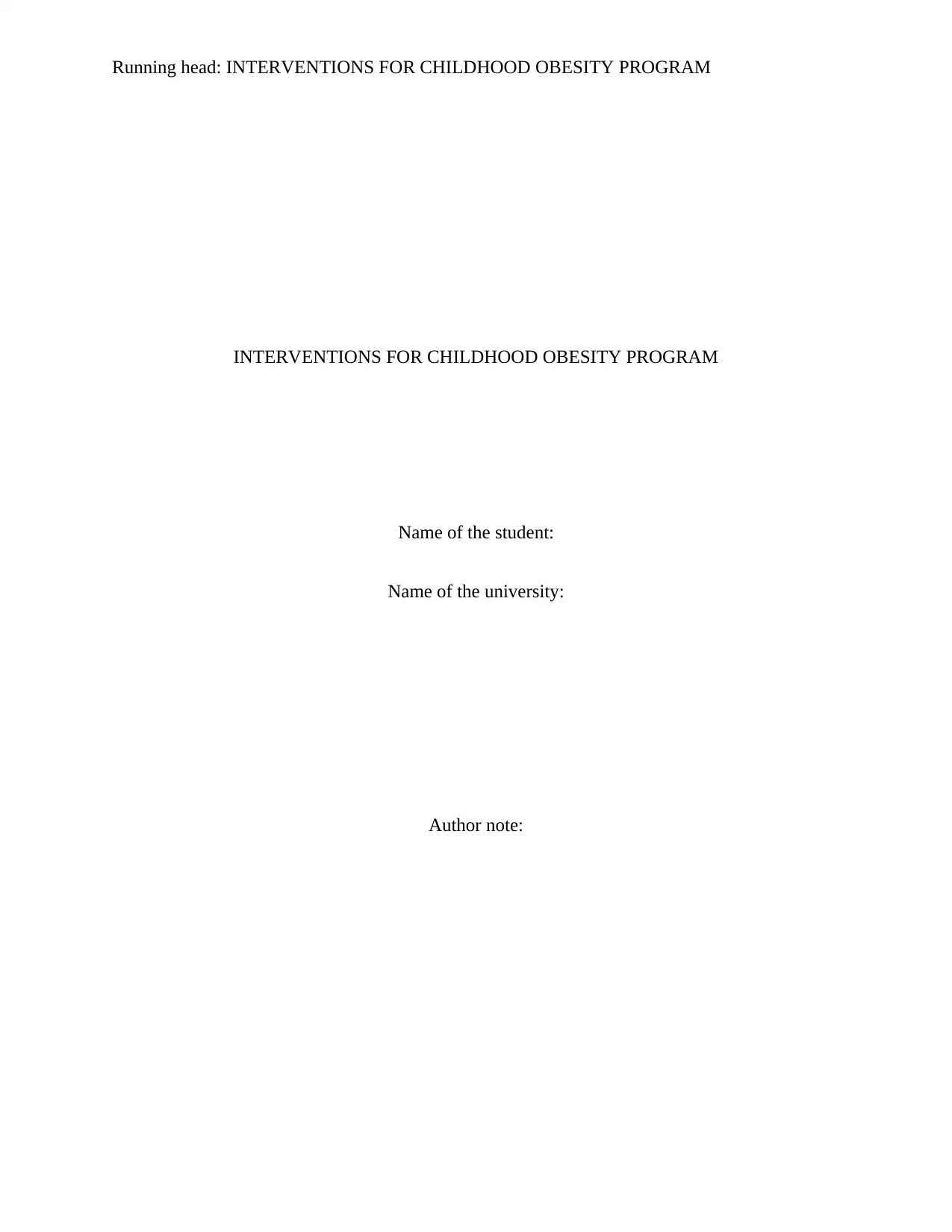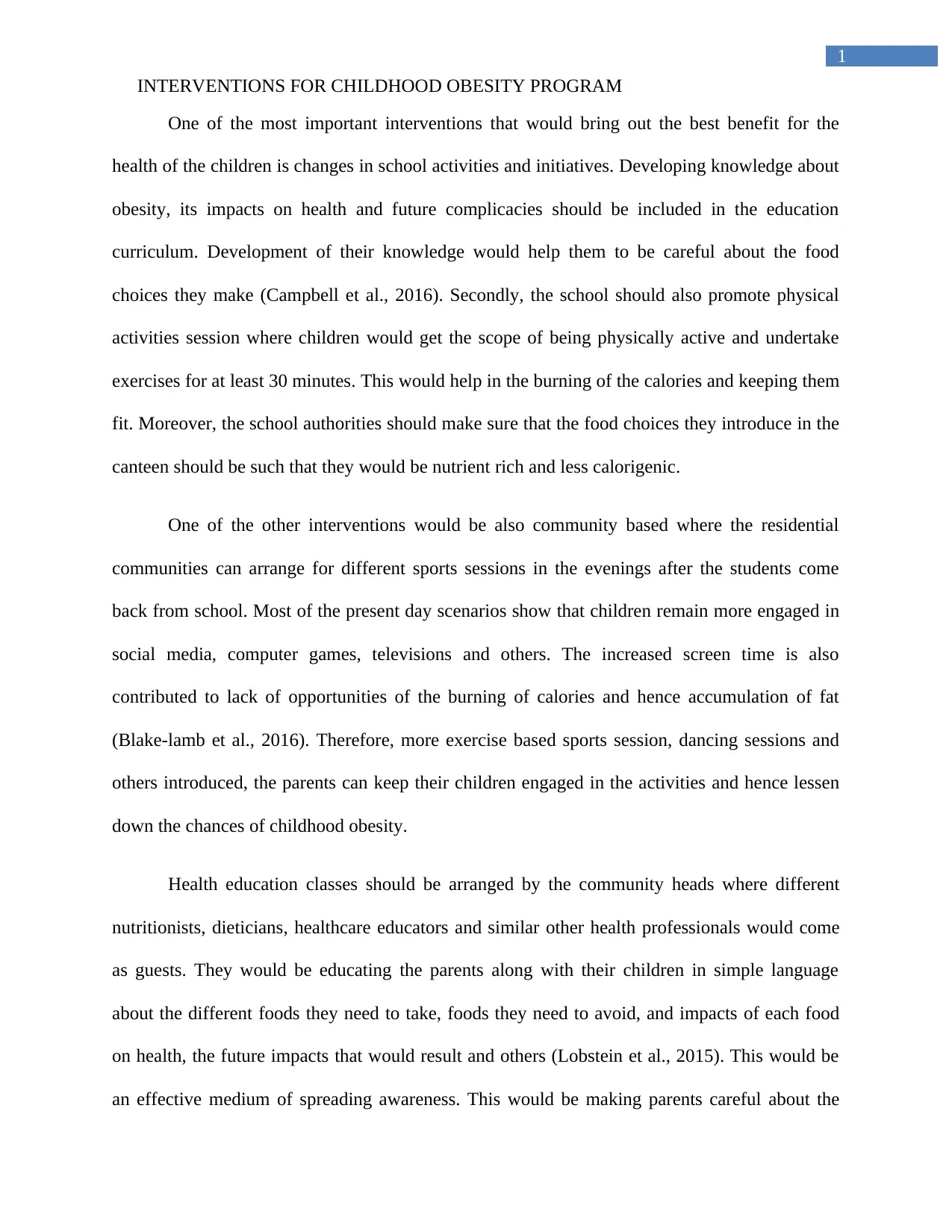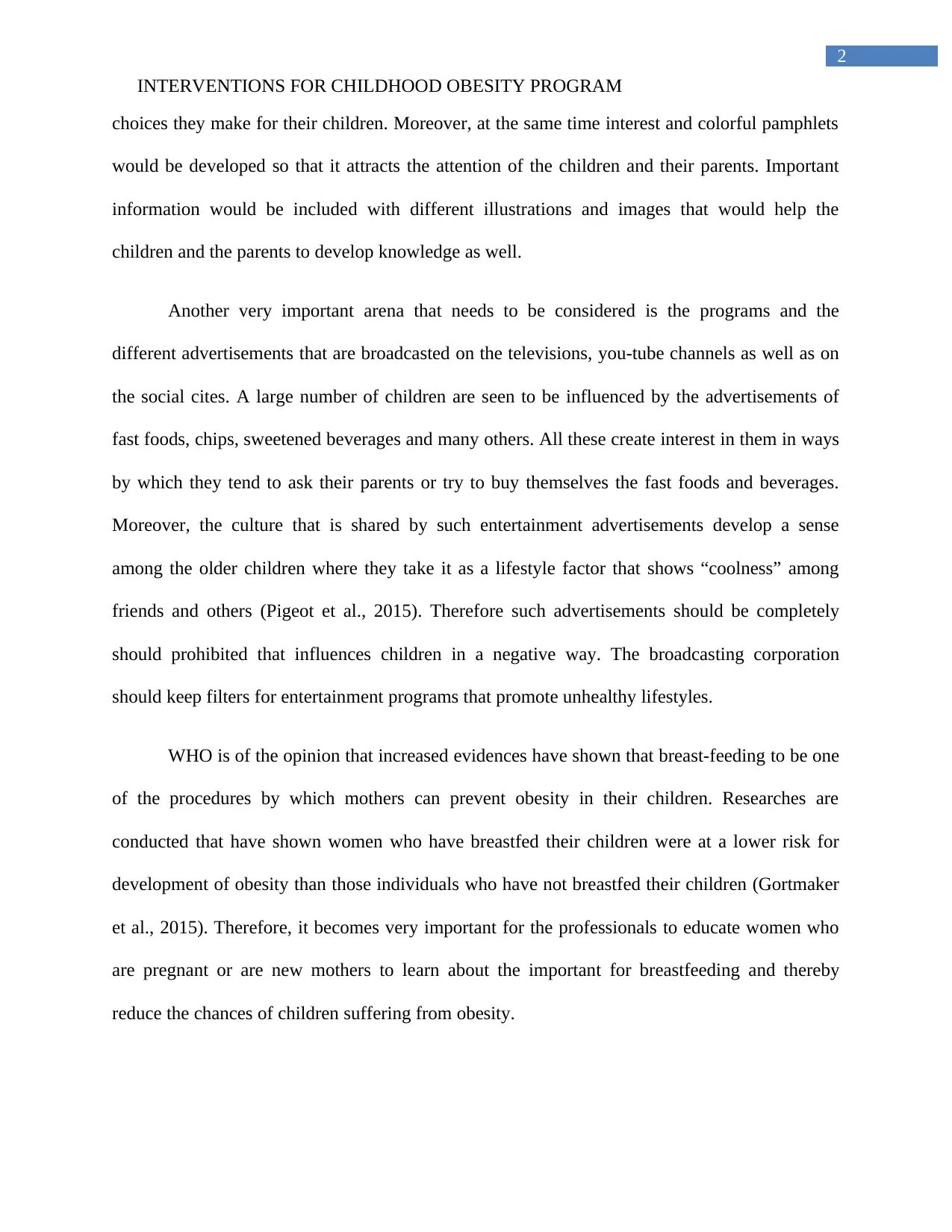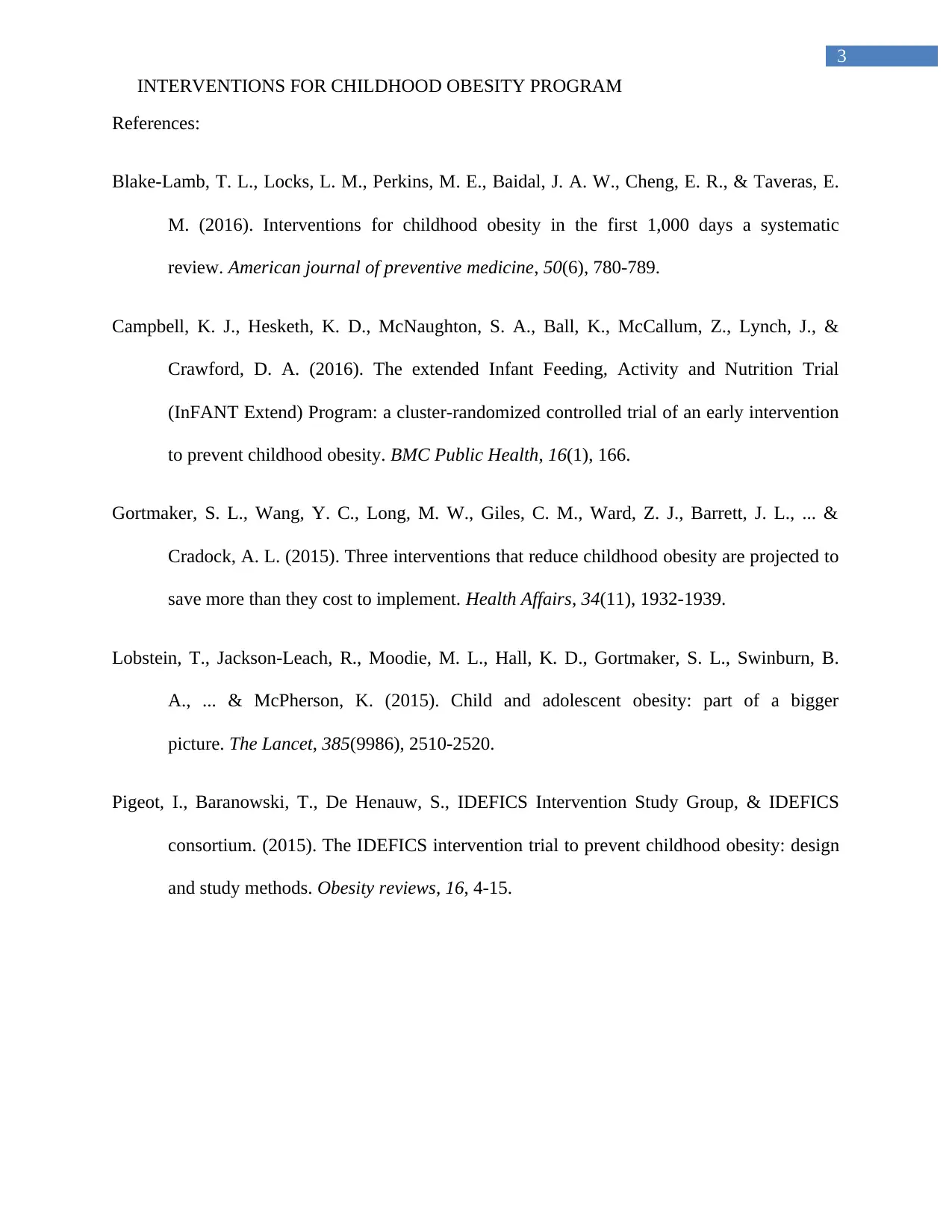Report: Childhood Obesity Program Interventions and Strategies
VerifiedAdded on 2023/06/10
|4
|1034
|178
Report
AI Summary
This report examines various interventions aimed at preventing childhood obesity. It emphasizes the importance of changes in school activities, including incorporating obesity education into the curriculum, promoting physical activity, and providing nutritious food options in canteens. Community-based interventions, such as sports sessions and health education classes, are also highlighted. The report stresses the need to address the impact of media, particularly fast food advertisements, and the promotion of breastfeeding. It suggests that schools should promote physical activities and make sure the food choices they introduce in the canteen should be nutrient rich. Community heads should arrange health education classes where different nutritionists, dieticians, healthcare educators and similar other health professionals would come as guests. The report also recommends prohibiting advertisements that negatively influence children and educating pregnant women about the benefits of breastfeeding. The report provides references to support the findings.
1 out of 4











![[object Object]](/_next/static/media/star-bottom.7253800d.svg)